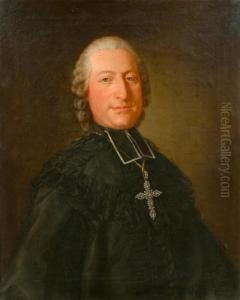Emanuel Witz Paintings
Emanuel Witz was a Swiss painter born in 1717 in Rorschach, a small town on the shores of Lake Constance. He is primarily known for his contributions to the Baroque and Rococo movements, which were dominant in European art during the 17th and 18th centuries. Witz's early life was marked by his exposure to the rich cultural and artistic environment of Switzerland, which was a pivotal factor in shaping his artistic journey.
Witz received his initial artistic training in Switzerland but, like many artists of his time, sought to expand his horizons by traveling to Italy, a country considered the epicenter of art and culture in Europe. His time in Italy, particularly in Rome, played a crucial role in his development as an artist. He was profoundly influenced by the works of the great Italian masters, which is evident in his adept use of light, shadow, and his attention to detail. These elements became hallmarks of his style, distinguishing his work from that of his contemporaries.
Upon returning to Switzerland, Witz began to establish himself as a prominent painter. His works during this period were characterized by their intricate compositions and vibrant use of color, traits that were well received by patrons and the wider public. Witz's paintings often depicted religious and mythological scenes, a common theme in Baroque art, but he also showed a keen interest in landscapes and portraits, demonstrating his versatility as an artist.
Despite his success, Emanuel Witz remained relatively unknown outside of Switzerland for many years. It was only in the later stages of his career and posthumously that his work began to receive the international recognition it deserved. Today, Witz is celebrated for his contributions to the Swiss art scene and his ability to blend the Italian influences he absorbed with his unique vision, creating works that are both distinctive and timeless.
Emanuel Witz passed away in 1797, leaving behind a legacy as one of Switzerland's most esteemed painters. His works continue to be studied and admired for their beauty and technical skill, securing his place in the annals of art history.
